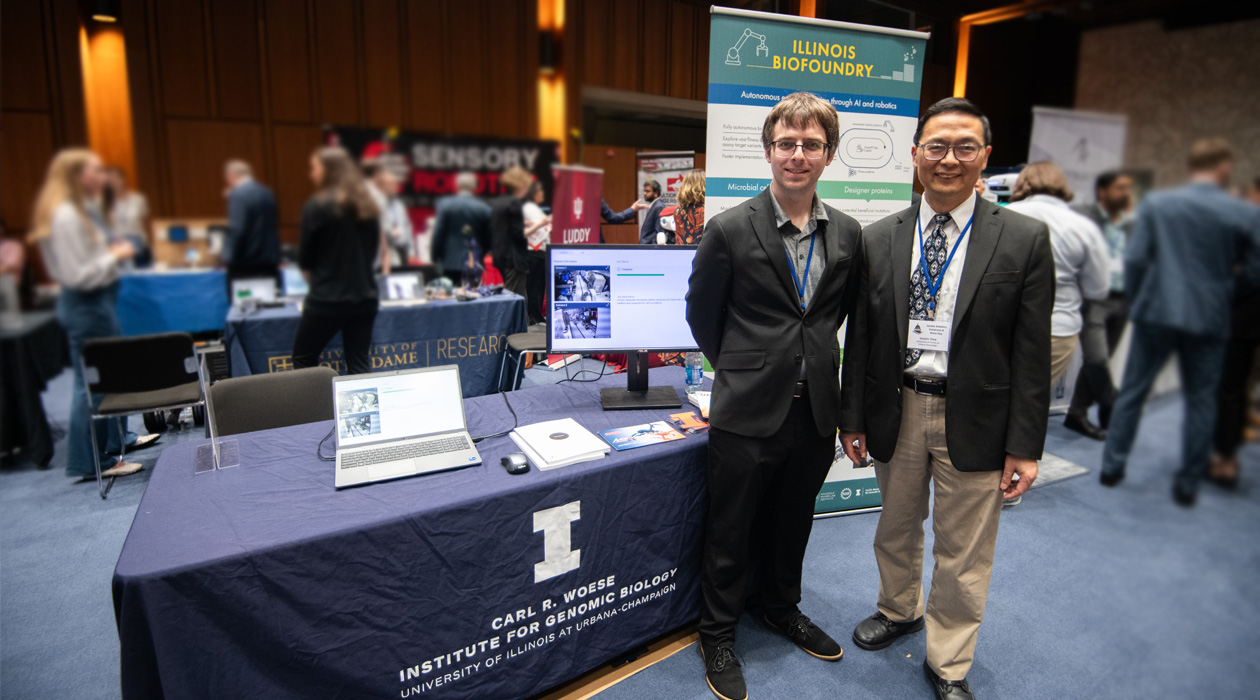IGB researchers awe Congress leaders with iBioFAB

Stephan Lane, left, and Huimin Zhao at the Robotics Showcase and Demo Day / Brian Mosley
The Computing Research Association, in collaboration with the Institute of Electrical and Electronics Engineers and Carnegie Mellon University, hosted Members of Congress and the public at the Robotics Showcase and Demo Day in Washington D.C., on April 30th. The event showcased exhibitors from across industry, academia, and government.
The event, titled “Robotics for a Better Tomorrow”, followed the Senate’s year-long focus on breakthroughs in artificial intelligence. Members of Congress and their staff were able to engage with robotics researchers, developers, and students from 17 states.
The University of Illinois Urbana-Champaign participated by holding a live demonstration of the Illinois Biological Foundry for Advanced Biomanufacturing. Housed in the Carl R. Woese Institute for Genomic Biology, iBioFAB aims to accelerate the biological engineering process by integrating artificial intelligence and machine learning with laboratory automation. It can generate thousands of samples each day using custom-designed workflows for different applications of synthetic biology.
“The integration of AI and robots with synthetic biology has the potential to drastically change our current paradigm of characterizing and engineering biological systems. It is becoming a new powerful engine for the rapidly growing bioeconomy,” said Huimin Zhao (BSD theme leader/CABBI/CGD/MMG), a Steven L. Miller Chair of Chemical and Biomolecular Engineering.
“We were able to provide a really unique perspective on robotics as the only participants that were working on biotechnology,” said Stephan Lane (CABBI), the Manager of iBioFAB. “We developed a web application, which listed the different workflows and, at the click of a button, the attendees were able to watch a live view of iBioFAB executing the workflow.”
Both Lane and Zhao explained to the Congress members that many researchers may not have access to expensive equipment, but iBioFAB helps in reducing that inequality by allowing people to conduct experiments remotely.
“They were able to run reactions, grab plates and send them to other instruments, prepare cell cultures, take measurements, and run enzyme assays during the demonstration,” Lane said. “Everyone was interested because the concept of using robotics in biotechnology was a brand-new idea to them.”
Lane and Zhao also outlined their work at the Integrated Bioprocessing Research Laboratory at the University of Illinois. While iBioFAB is used to carry out experiments on a small scale, IBRL is used to scale up the processes and commercialize products.
“Biomanufacturing is a hot topic, so I was able to describe how Illinois is well positioned to take microbes that we developed in the lab and put them in 10,000-liter fermenters where they can make new products,” Lane said.
